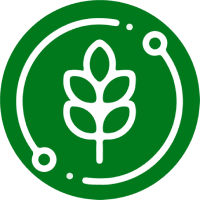EAC and Agriculture & Food Security
Agriculture is one of East Africa’s most important sectors with about 80% of the region’s population living in rural areas and depending on agriculture for their livelihood. The agricultural sector is dominated by smallholder mixed farming of livestock, food crops, cash crops, fishing and aquaculture. It includes people working together across all agricultural levels, from cross-border traders and SMEs to government policymakers and international exporters. EAC-Germany support to EAC integration in this sector focuses on enhancing agricultural development through promoting inclusive and integrated agro-processing value chains, with a special focus on private sector involvement and improved framework conditions, including quality infrastructure, standards and customs procedures. Projects target key sectors like coffee and tea for a range of training and mentoring, aiming for higher quality, better marketing and higher incomes from a growing agro-processing sector.
The German Government supports this EAC Sector under Core Area 1 of EAC-Germany cooperation as defined by BMZ 2030 – “Sustainable Economic Development, Training and Employment” in the Intervention Area of “Socially and Environmentally Sound Supply Chains, Trade and Sustainable Infrastructure." The cooperation directly contributes to implementing three of the eight priority areas defined by the 6th EAC Development Strategy, namely “Strengthening Productive and Social Sectors," “Development of Regional Infrastructure," and “Awareness Creation." The BMZ 2030 reform strategy focuses on a new quality of cooperation. More information on BMZ 2030 can be found here.

Agriculture & Food Security
EAC-Germany Support

Fruits and Vegetables
The EAC region produces a wide range of fruits and vegetables for domestic consumption and export to regional and international markets. The volume of EAC trade in the global F&V market is estimated at around 1.28 million tons per year. While the proportion of fresh exports is 87%, processed exports account for 13%. The sub-sector has huge transformation potential and provides promising economic opportunities for reducing rural poverty and contributing to food security. However, the F&V production base across the EAC is fragmented, smallholder-dominated and has a low yield per acre, as well as low productivity stemming from a lack of access to markets, credit and technology. This is exacerbated by volatile food and energy prices. There are significant pre- and post-harvest losses with the latter at times reaching 35% to 60%. The sub-sector is also characterised by the existence of a relatively small formal marketing channel compared to a large informal one. To change this and build on the potential of the F&V sub-sector, the EAC has developed and is now implementing the EAC Fruit & Vegetable Strategy and Action Plan.Projects:
SEAMPEC II (GIZ)
Objective: Strengthening value addition in the fruits & vegetables sub-sector.
Approach: SEAMPEC II supports improved framework conditions through:
Support to the implementation of the EAC Fruits & Vegetables Strategy and Action Plan 2020-2030 as well as the EAC Post-Harvest Loss Management Strategy and Action Plan. Support to national implementation of priority harmonised F&V product standards. Facilitation of national implementation of harmonised customs procedures. Support to private sector value addition and trade initiatives for deepening inclusivity and partnerships. Development and implementation of the EAC Simplified Guide for MSMEs on Cross-Border Trade of Perishable Agricultural Goods.
This part of SEAMPEC II is implemented by GFA Consulting Group GmbH Tanzania Branch.
Find more information on SEAMPEC II here.
QI Project (PTB)
Objective: Strengthen the Quality Infrastructure in the East African Community in line with the needs of the fruits and vegetables sub-sector
Approach: The project develops capabilities and capacities to ensure that the quality infrastructure services along value chains in the fruits & vegetable sector meet international standards. This includes:
- Improving testing services in partner states to ensure that products are safe for consumption
- Activities aimed at strengthening the quality infrastructure will be anchored in the respective regional strategies and action plans (EAC Fruits and Vegetables Value Chain Strategy and Action Plan 2021-2031)
- Raising awareness on the importance of quality in the fruits and vegetable value chain
Find more information here.
You want to learn more on quality assurance during mango juice production? Click below. https://www.youtube.com/watch?v=8UdBtxS465g https://www.youtube.com/watch?v=KCytb3YfXAM https://www.youtube.com/watch?v=YG4AbCuT3RE

Leather
The EAC region accounts for 3% of the world's total cattle herd, 2% of the sheep herd and 5% of the goat herd. This resource base for the production of hides and skins lays a strong fundament for the development of the leather industry. Additionally, the demand for meat in the EAC is steadily on the rise which is another growth indicator for the leather industry. However, so far, the economic importance of the leather industry has been modest and even on the decline. From a regional average of 0.6% (share of agricultural GDP) in 2013, to 0.28% in 2017. Key factors for this decline include a weak policy environment which discourages investment in value added products such as footwear and leather products, continued export of critical raw materials and weak institutional arrangements to enforce quality and standards in the value chain. In order to turn this development around and foster the growth opportunities of the leather industry, the EAC is implementing a regional Strategy and Implementation Roadmap for Leather and Leather Products.Projects:
SEAMPEC II (GIZ)
Objective: Strengthening value addition in the leather sub-sector.
Approach: SEAMPEC II supports priority regional framework conditions for value addition to improve the leather industry’s competitiveness through multiple efforts, including:
Coordination and steering of the EAC Strategy and Implementation Roadmap for Leather and Leather Products. Capacity building on Good Manufacturing Practices. Implementation of harmonised leather product standards and harmonised customs procedures. Support to inclusive private sector networking and advocacy to promote trade integration for sustainable and equitable industrial development.
This part of SEAMPEC II is implemented by GFA Consulting Group GmbH Tanzania Branch.
Find more information on SEAMPEC II here.
QI Project (PTB)
Objective: Strengthen the Quality Infrastructure in the East African Community in line with the needs of the leather sector
Approach: The project develops capabilities and capacities to ensure that the quality infrastructure services along the leather value chain are upgraded and utilised. This includes:
- Support of national quality infrastructure authorities by targeted capacity-building measures to ensure reliable laboratory analyses according to international standards.
- Activities aimed at strengthening the quality infrastructure anchored in the respective regional strategies and action plans (The East African Community Leather and Leather Products Strategy and Implementation Roadmap 2020 – 2030)
- Enable information exchange on Quality Infrastructure services between public (legal and regulatory) authorities and private-sector stakeholders
Find more information here.